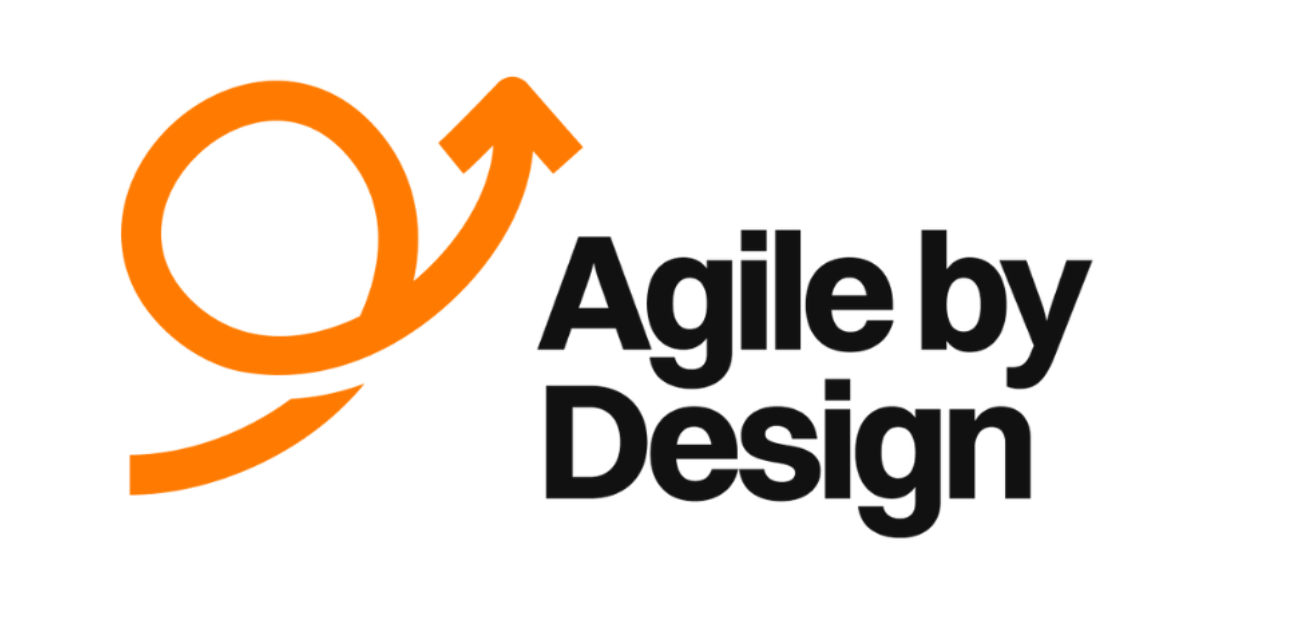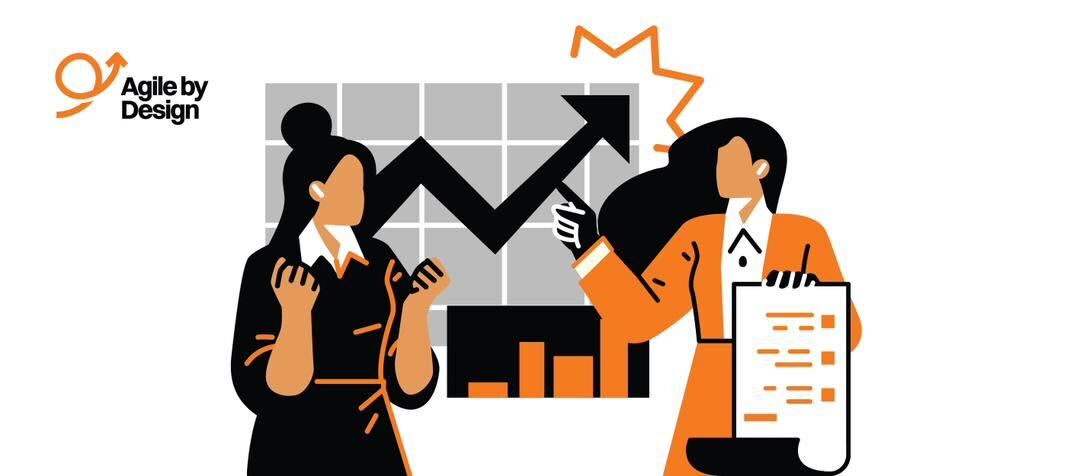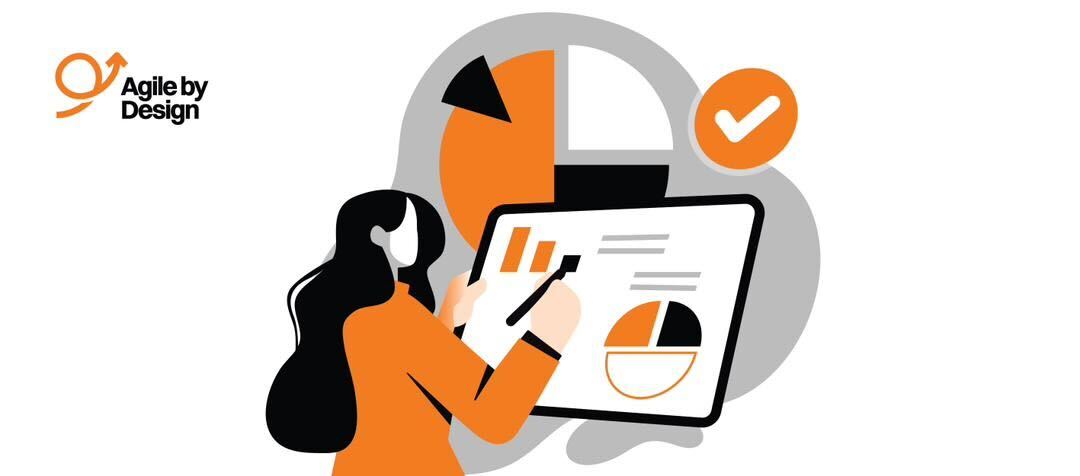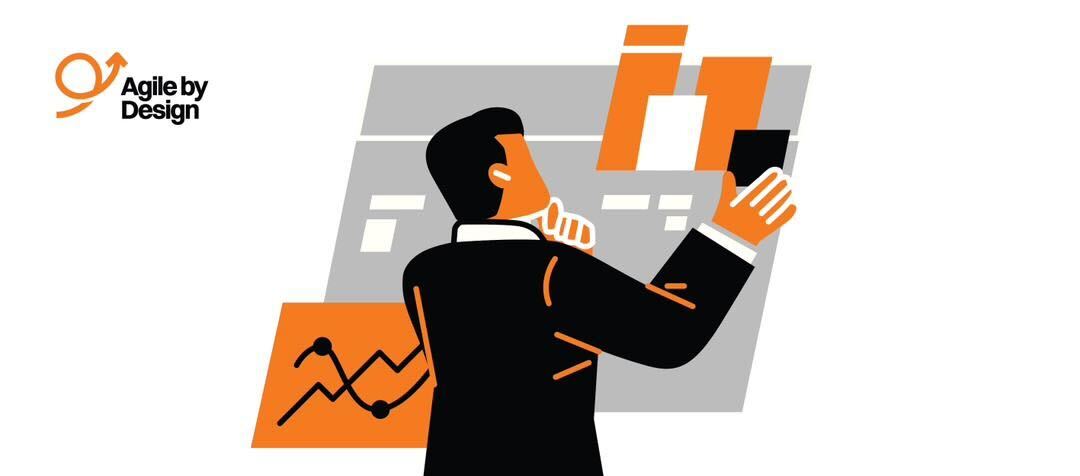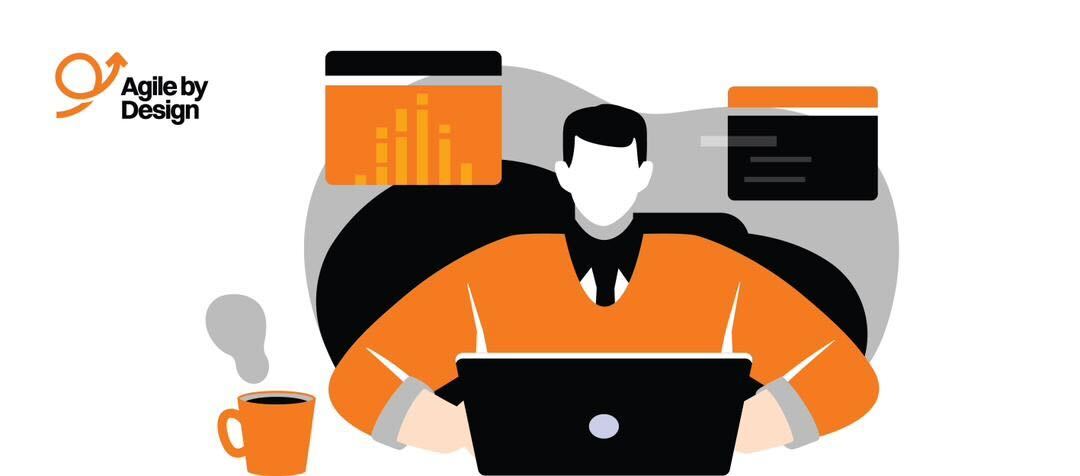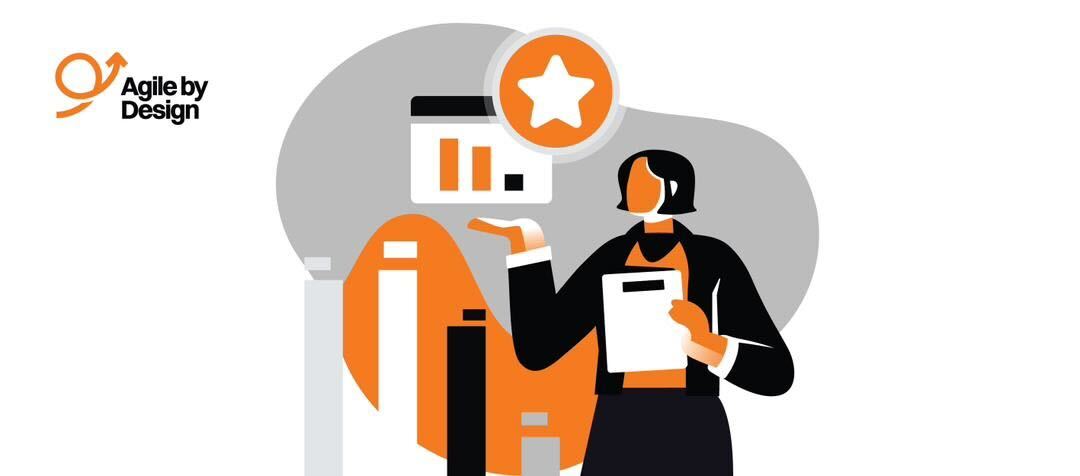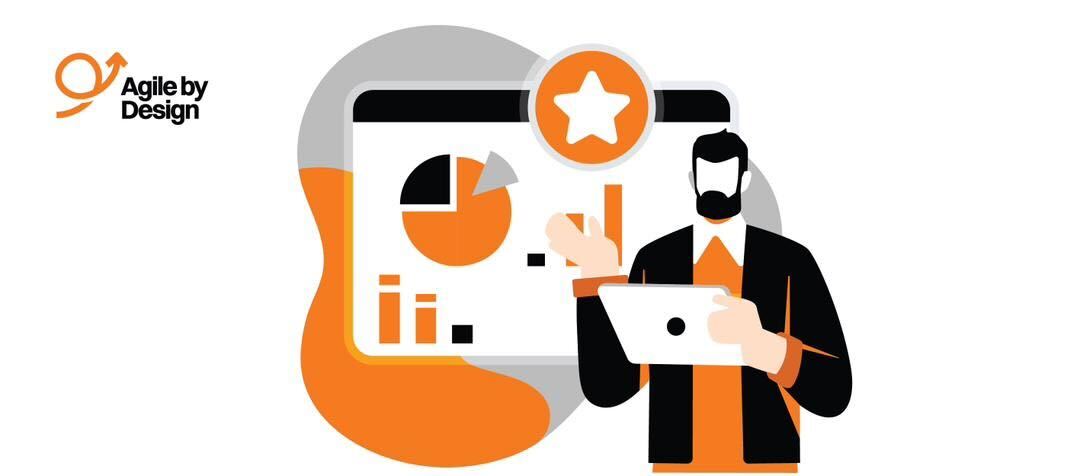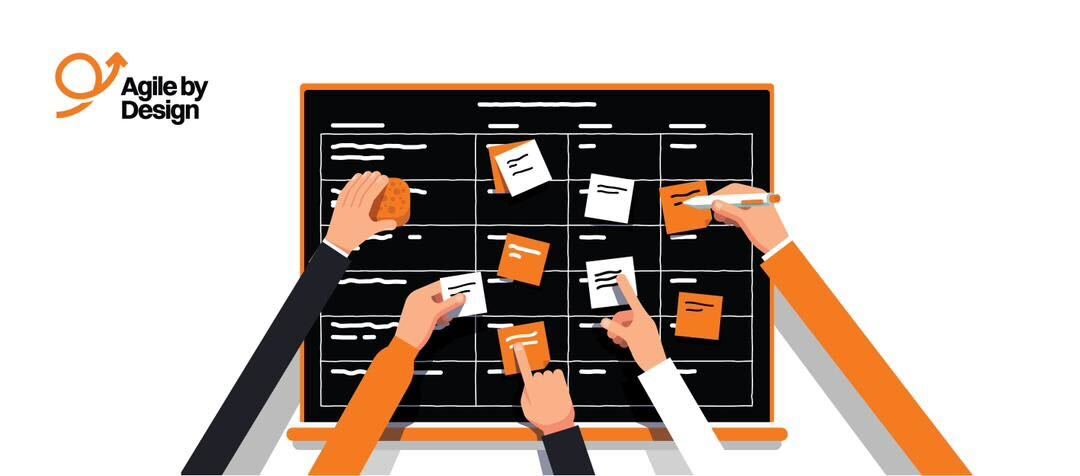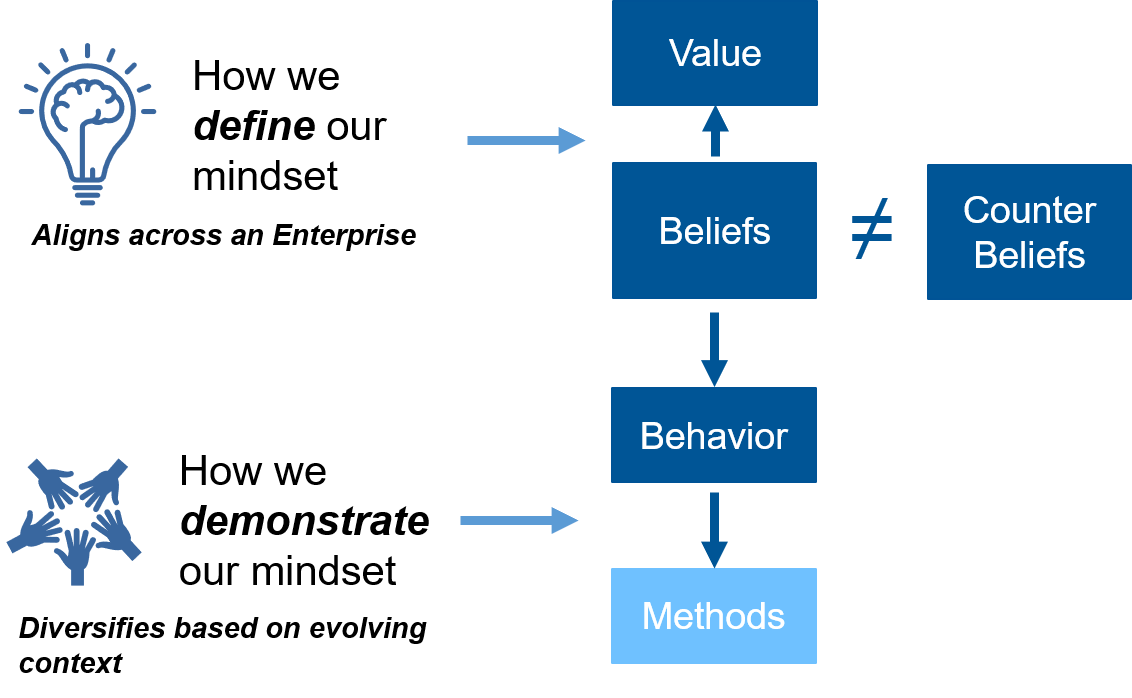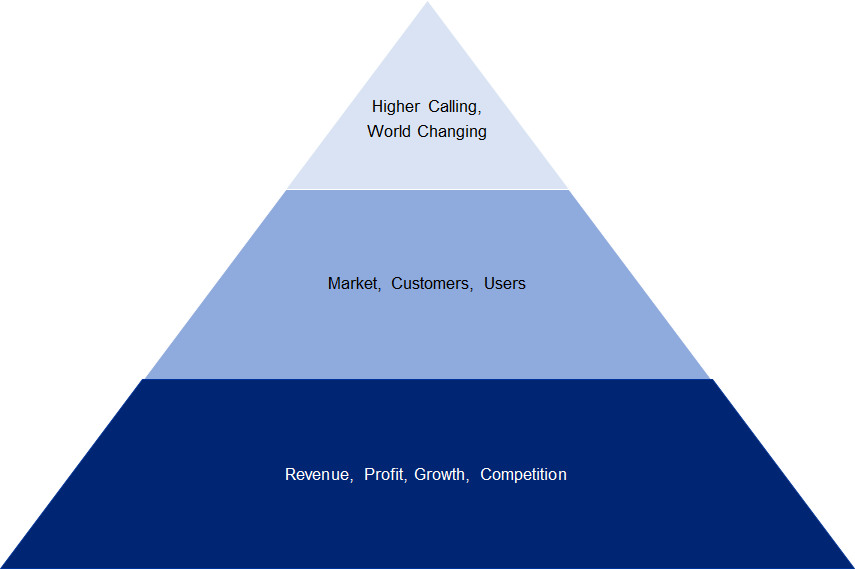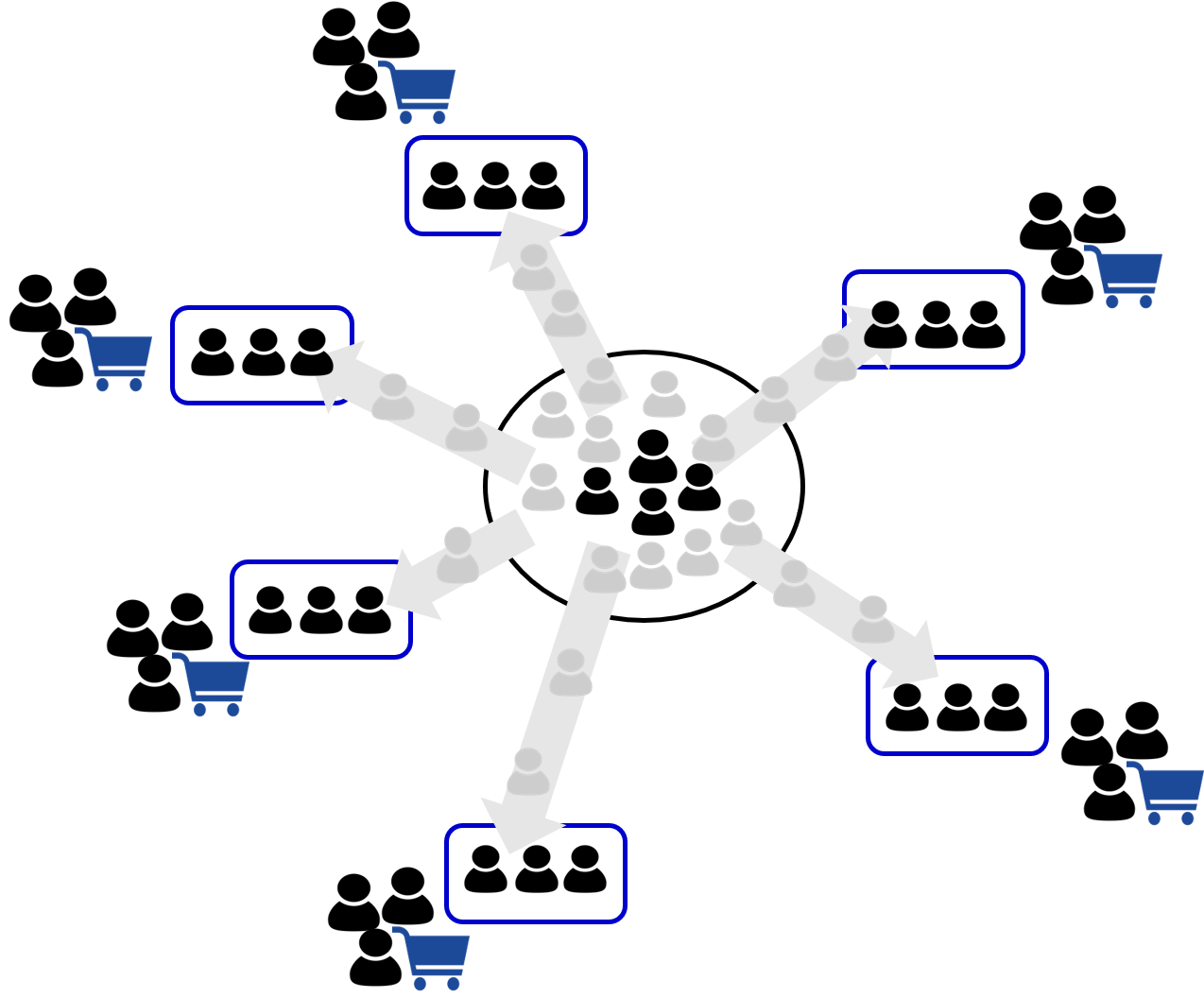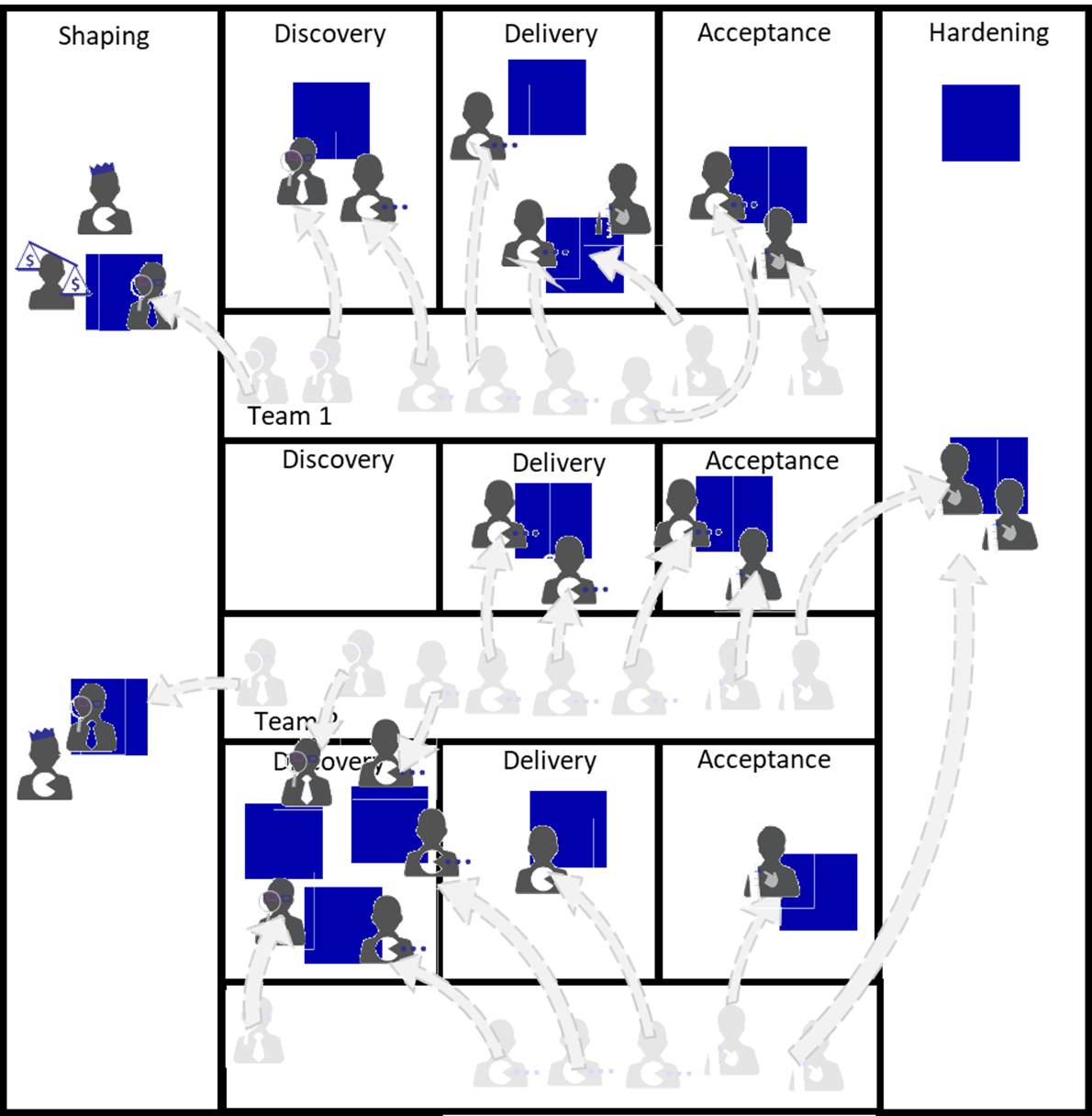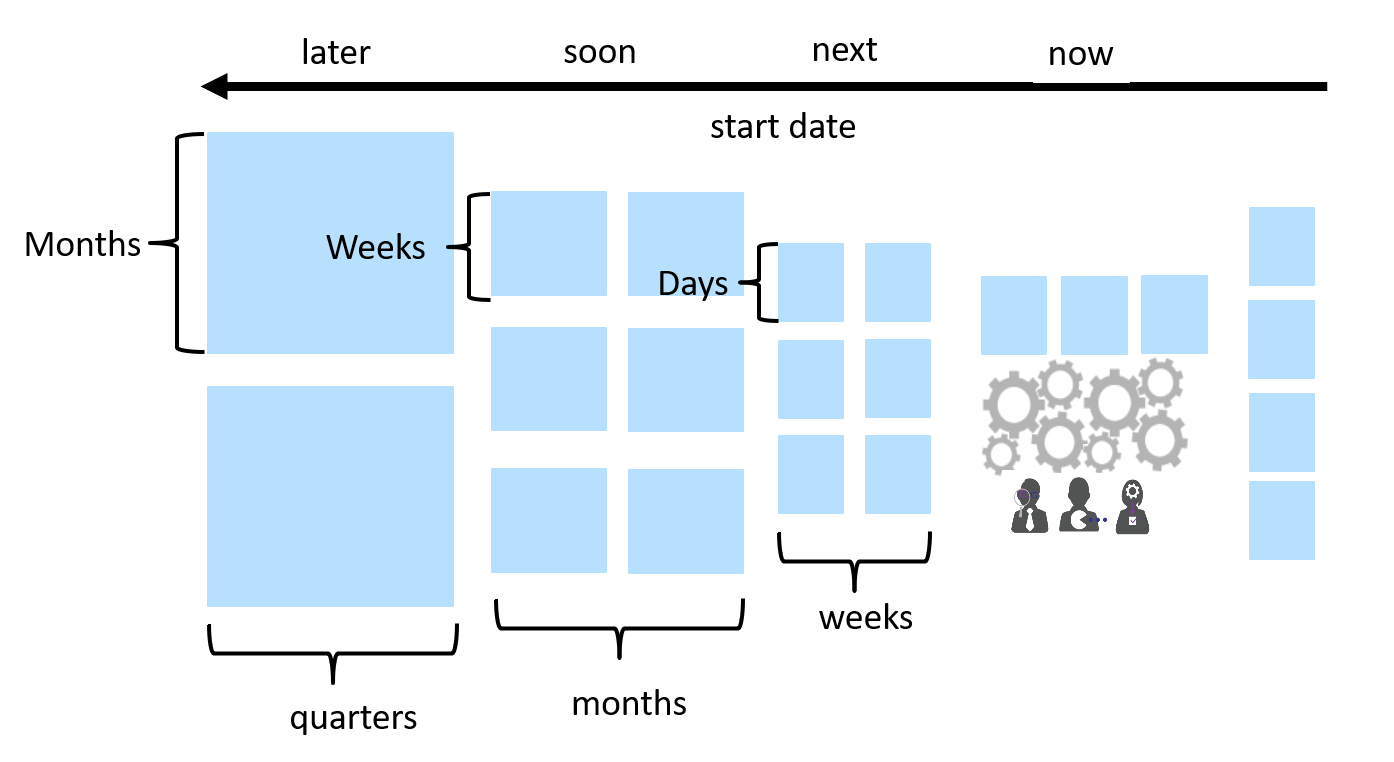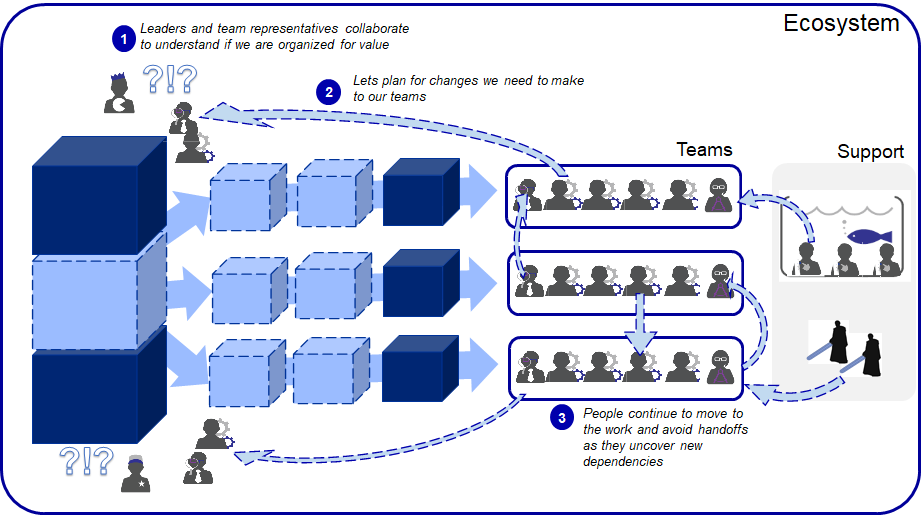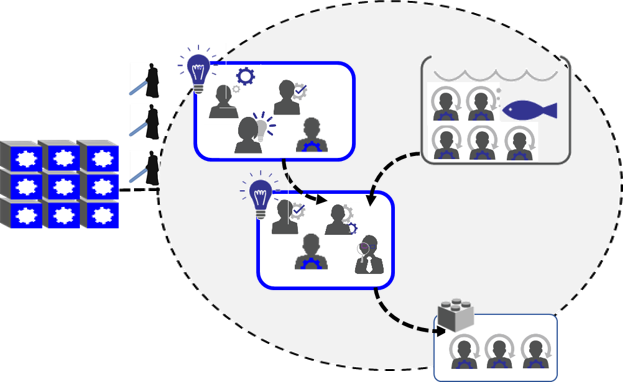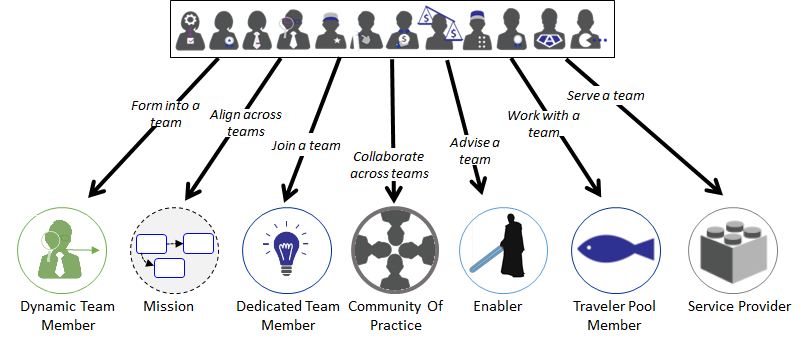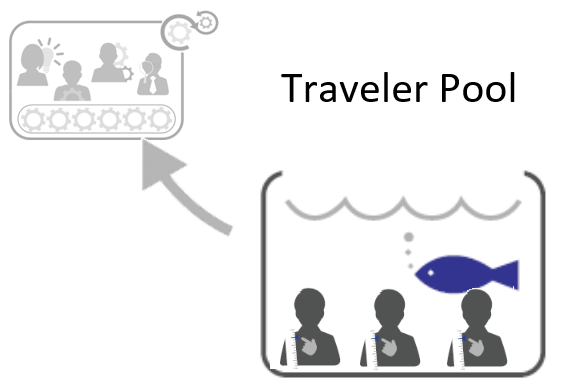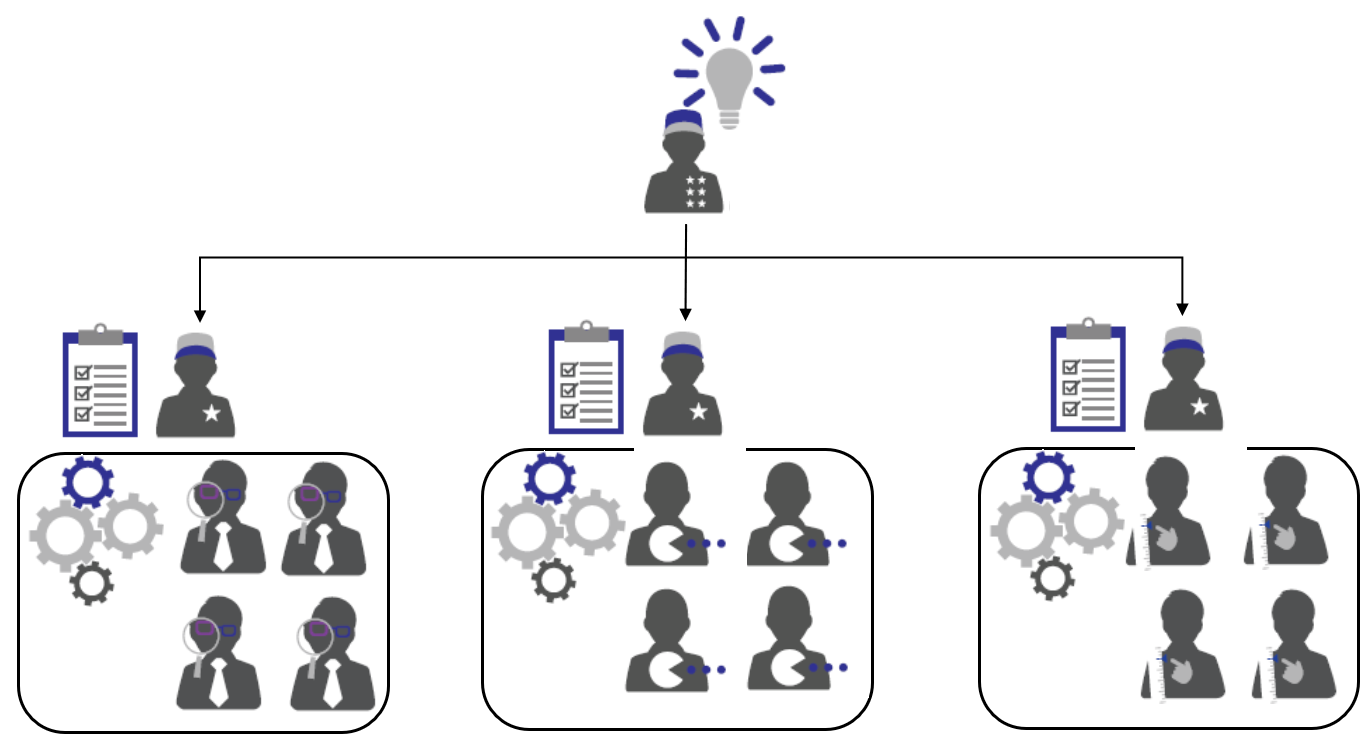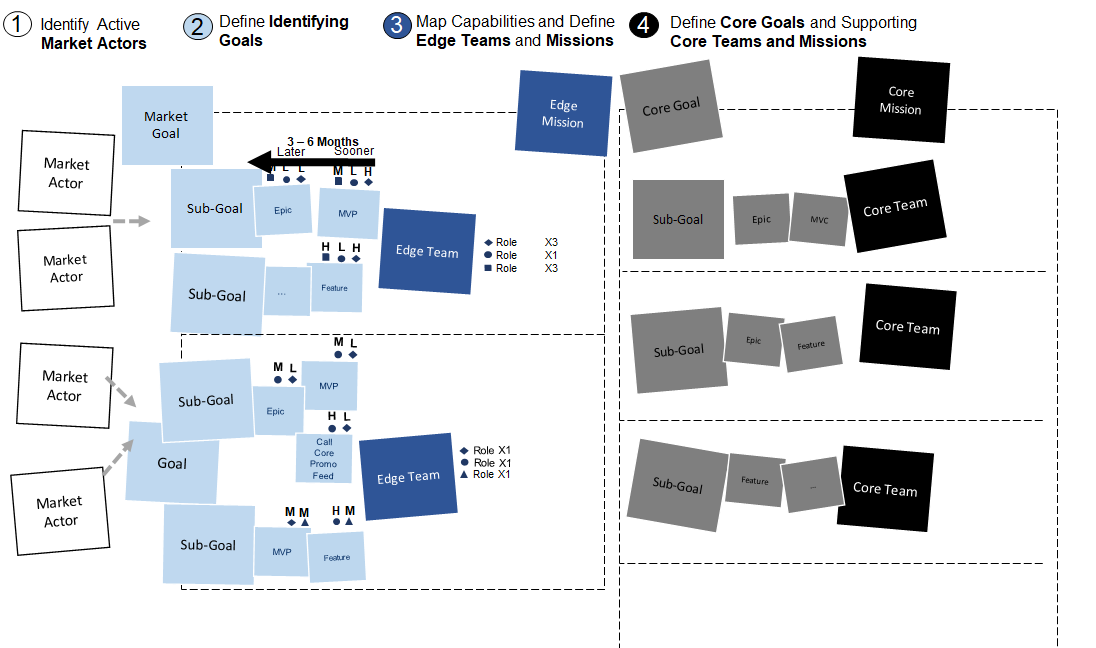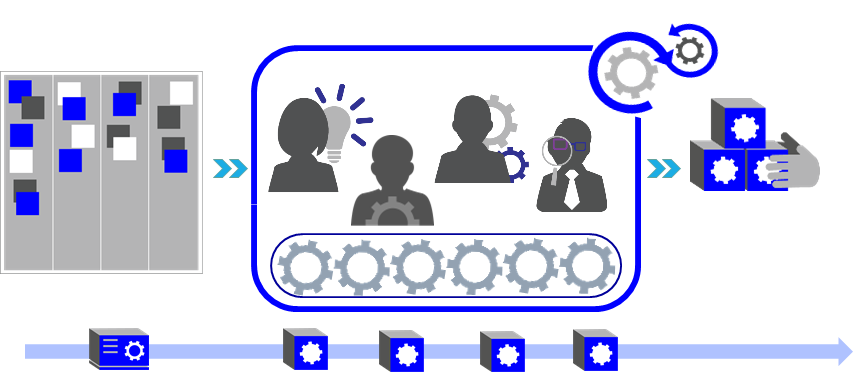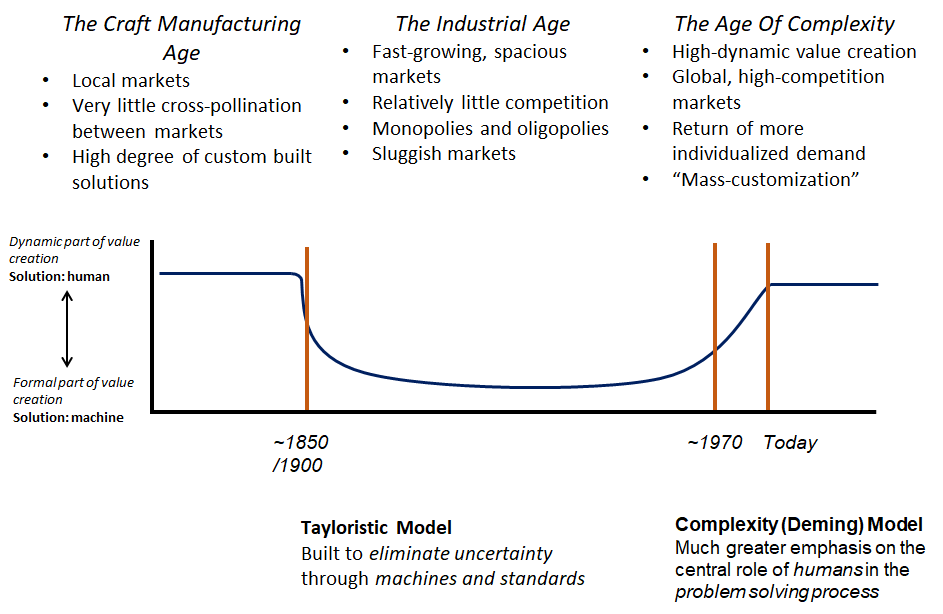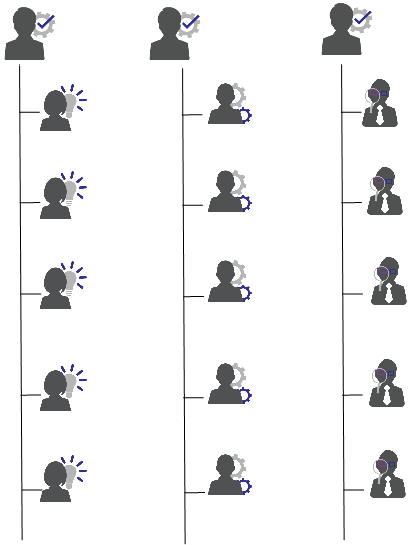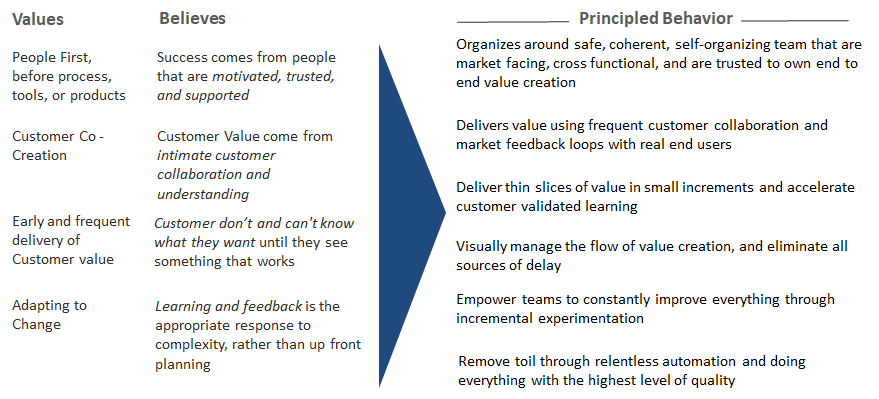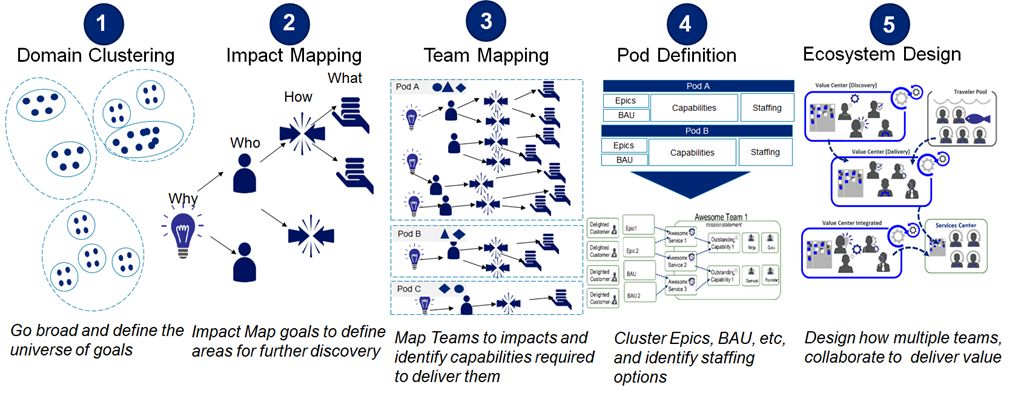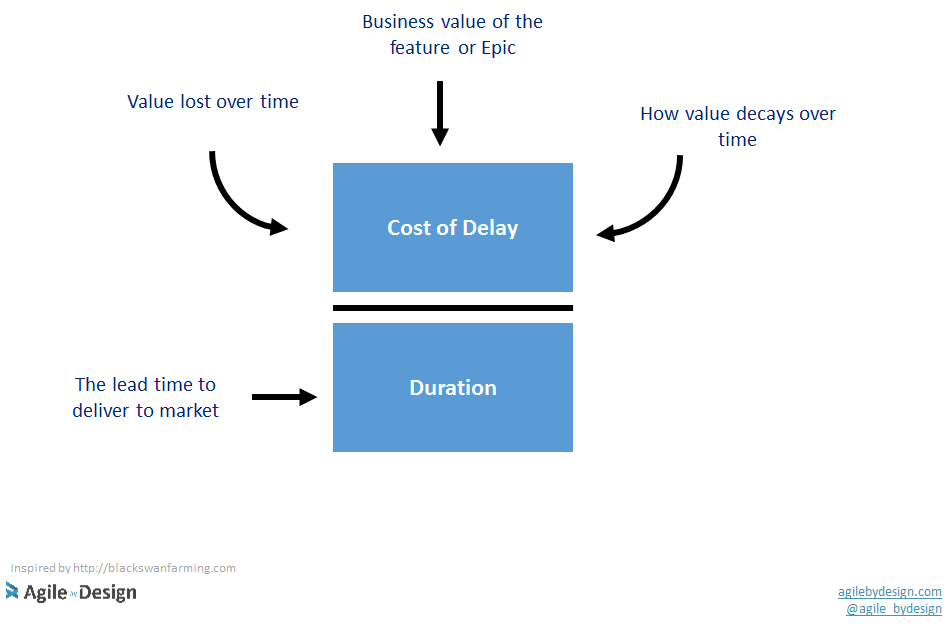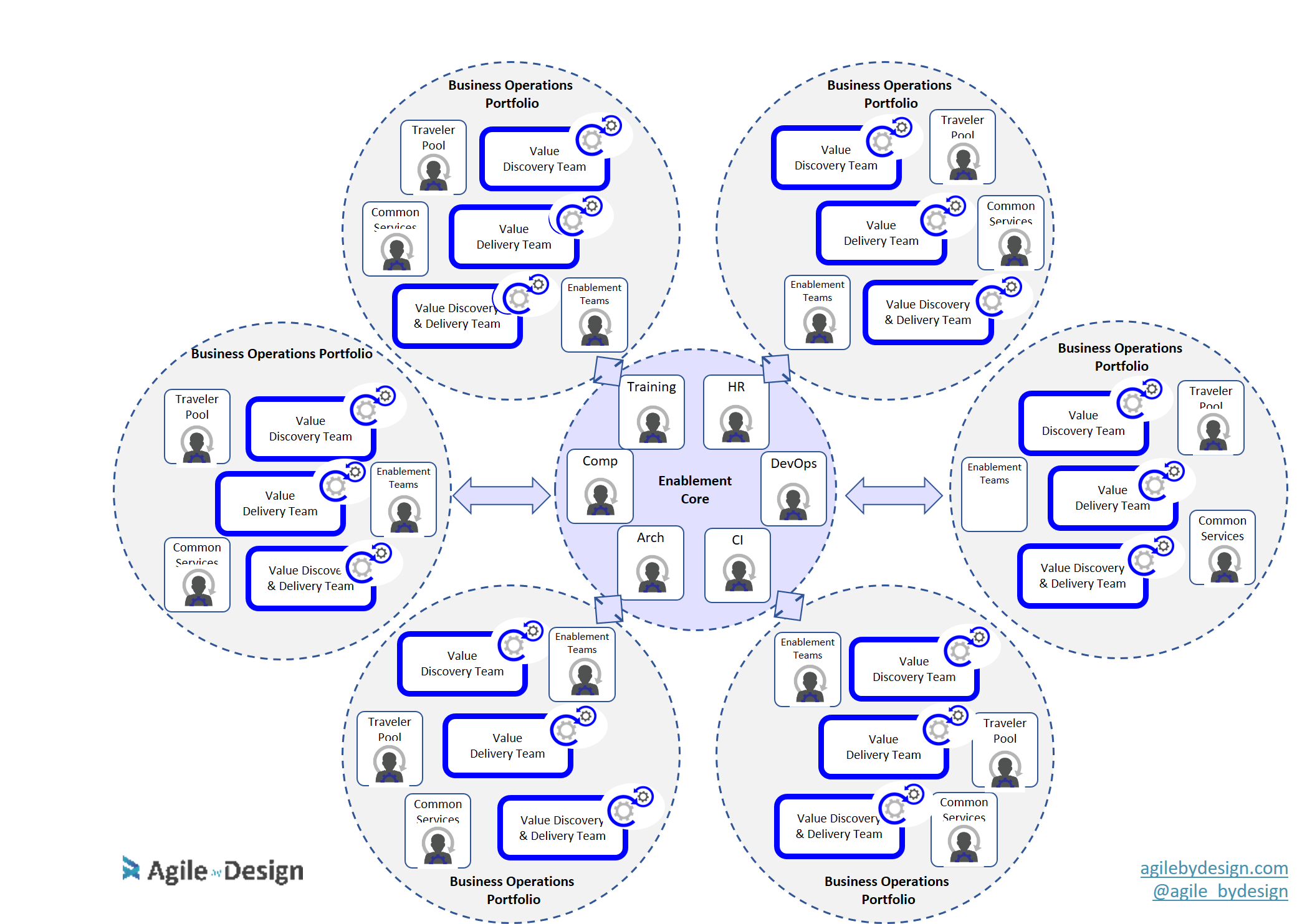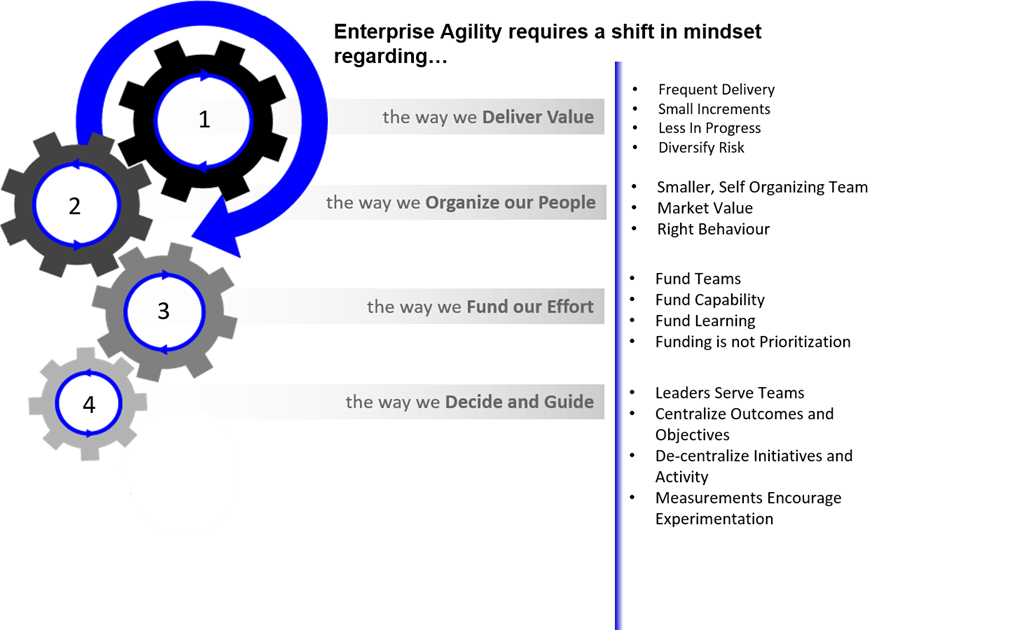The concept of increasing the choice people have when determining how to organize their working lives is a critical one, when considering how to Organize Forward to meet the needs of the today and the future.
It is likely true that as a rule your organization does not have systems in place to empower all levels of your organization to make the majority of their decisions quickly and likely not with safety. Even organizations deep into an Agile transformation turn out to have only provided opportunities to self organize inside of a highly constrained and curated set of boundaries.
Again, just like Organizing Around Purpose, we can start moving forward on increasing how much choice people have to organize their work at whatever level you are in the organization, and a good start is to ask a few questions and take stock. How can we increase self-organization in and across teams? How can individuals make better decisions for the organization, and choose options that will help achieve organizational purpose? What choices can people make now, and what choices are restricted to positional leaders or centralized governance bodies? How can we increase autonomy without decreasing safety? Where can we find examples where people are making effective use of autonomous self organization? What are examples where people continue to make poor choices, and why are they making them?
Remember, start these discussions with an eye towards facilitating change in your sphere of influence, whether that be a single team, a department, a line of business, the executive group, or your entire organization. I'll also re-iterate that it is wise to approach increasing organizational choice incrementally, you won't be able to move to the ideal state (if such a thing even exists) in one go. I will continue to repeat this mantra as I write.
In summary, organizing through choice boils down to:
- Transparency, Feedback, and Safety - collectively, these are organizational prerequisites that are required for any organization that wants to achieve real autonomy. Without radical transparency from everyone we don't have the information we need to make good choices. Without feedback we won't know the outcomes of our choices. Without safety people will not make choices that involve any risk.
- How We Work and Who We Work With - with the right conditions in place, we should be able to trust educated, intelligent adults to self - organize around their workflow, processes, and methods. A little alignment can be helpful, but less is more in almost all cases. Most agile adoptions tends to stop here. Hiring and nurturing people so they have the smarts to self select what team to be a part of, what role to play, and what teams to work with is not a capability most organizations seem to possess, or be even willing to experiment with. Again, adults are capable of much more than we give them credit with.
- What We Work On and Why We Work On Something- Agile and Digital has made some headway here, and so have a lot of startup / post startup organizations. Most of us have a long way to go when it comes to empowering people on the ground to decide on the best way to achieve an organizational outcome. Which is a shame given them most positional leaders have less context than folks closer to the customer and the actual work. Actually selecting the outcome will likely never be a completely decentralized process for many organizations, but there are many opportunities to increase the level of participation. In the traditional organization, the knowledge of a lot of people in the organization are left on the table when organizational roadmaps. strategies, etc are put forth.
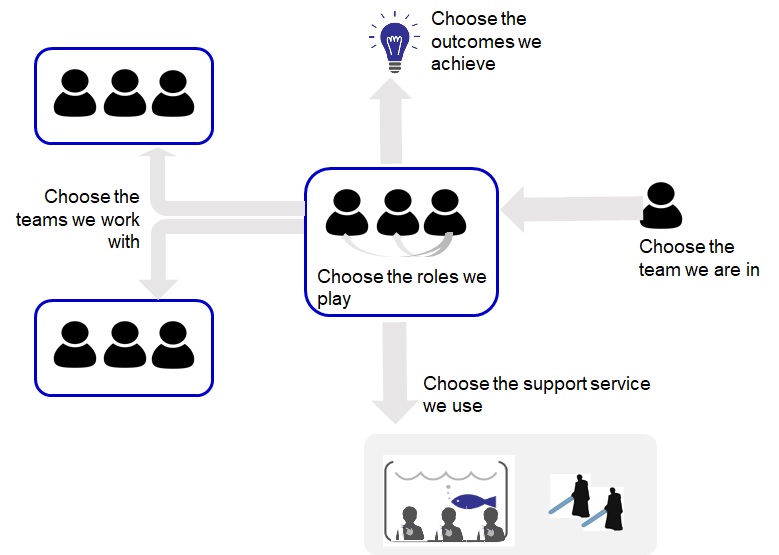

The Choice Challenge
The choice challenge involves getting your peers together to introspect on how much choice people have in the organization. We want to provoke some thoughtful discussion that will lead to opening up the amount of self - organization our people can tolerate. How you accomplish this will depend on your scope and context. Options range from informal discussions / workshops to more formal surveys followed up by breakout sessions. The exact format isn't as important as the quality of the dialogue!
In a nutshell we want to understand;
Does your Organization Use Safety, Transparency, and Feedback to Enable People to Choose how they Work and What they Work On
Some good questions (but by no means an exhaustive list) you can consider to start the dialogue:

Does your Organization Provide enough Transparency, Feedback, and Safety to Empower People to Make Decisions With Safety?
- Do people in your organization provide enough transparency for your team to make informed decisions around what to work on, how to do the work, and who to work with?
- Do people your organization make decisions by seeking advice, and resolving conflict in a fair and transparent manner? As a result, do you feel your team is able to make key decisions with a minimum of oversight?
- Do you, your team, and the rest of your organization use feedback effectively to increase the number and quality of options that feed into the choices your team can make?
- How safe are you and your team to present options even in the face of potential conflict? How safe are you and your teams to explore options and make small failures that lead to greater learning?

Are People Able to Self - Organize around How The Work Is Done and Who Does the Work?
- How much freedom do you have to define the majority of processes that govern how work is conducted?
- Is most work prescriptively defined by someone else or are you enabled to define processes that are fit for the purpose of you and your team?
- How much freedom do you have to play the role(s) you think would bring the most value to your organization, regardless of official position or job title?
- How easy is it to acquire new skills necessary to play different roles? Are there organizational or political barriers that interfere with playing different roles when you think there is a need?
- How often do you and your team rely on centralized support service teams or other teams to get things done, and how much freedom do you have in terms of deciding who provides those services including whether you want to do them yourself or work with an external provider ?

Are People Able to To Shape Organizational Outcomes and How to Achieve those Outcomes?
- How much input do you and your team have in determining what problem space /outcomes to work on that achieve organizational purpose?
- How much input do you and your team have in determining the plan and or solution to solving problems / achieving those outcomes?
- Is change introduced to your organization typically presented as something you and your team must do? Or is it presented as an invitation to participate?







